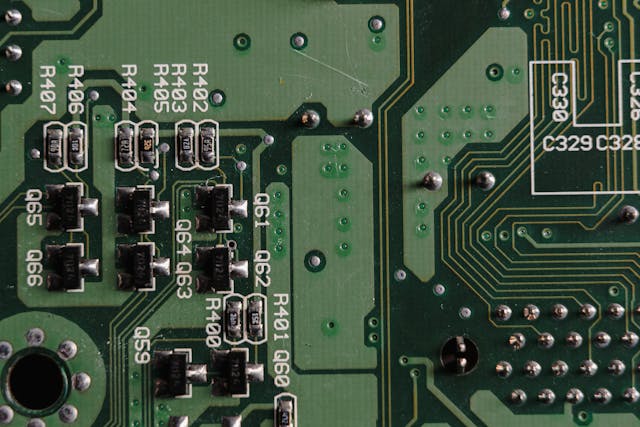HSDDSY2000 in-depth breakdown: specs, operation, maintenance, safety, and expert insights for HSD 2000 tape heads.
If you’re reading this, chances are you’ve stumbled upon a cryptic code , HSDDSY2000 , and are searching for answers. Maybe you’re staring at a rugged machine in your packaging line. Maybe you saw it in a manual, an invoice, or scrawled across the back of a warehouse part. Either way, you’re in the right place. Because what we’re really talking about here isn’t just a code , it’s a workhorse. A behind-the-scenes hero in high-speed packaging. This article dives into everything you need to know about the HSD 2000 series tape head, the probable identity behind “HSDDSY2000”.
We’ll cut through the technical fog, toss out the fluff, and get straight to the nuts, bolts, blades, and springs , with some real-world insights packed in.
What You'll Discover:
What is HSD 2000 and Why Should You Care?
Let’s make this relatable. Imagine you’re at the end of a high-speed conveyor line. Boxes are flying toward you like missiles. They need to be sealed , perfectly, quickly, and again and again, all day long. No room for error.
That’s where the HSD 2000 series tape head steps in. Mounted inside case sealers (mostly from Interpack but also compatible with others), this beast applies pressure-sensitive tape onto the top and bottom seams of boxes in one fluid motion. It cuts, presses, wipes, and repeats , hundreds of times per hour , without breaking a sweat.
It’s not glamorous, but it’s essential. And if it goes down, your entire packaging line could stall. That’s why understanding it matters.
A Look at the Models – More Than One “2000”
The HSD 2000 family has a few siblings, each with a slightly different personality. Let’s break them down so you don’t confuse them.
HSD 2000-ET II (The Standard Workhorse)
This is the most common version. Think of it as the default, the “vanilla” model , except it’s anything but plain. It’s designed for both 2-inch and 3-inch tape rolls and comes with adjustable tape legs, high-speed readiness, and tool-free adjustments. Durable, reliable, and trusted in thousands of plants.
HSD 2000 Mirror Version (For Awkward Layouts)
Sometimes your machine setup is flipped. In those cases, the mirror version is a godsend. It functions exactly like the standard version but is flipped to accommodate reversed carton flow.
HSD 2000 XS II (The Streamlined One)
A bit more refined, a little newer. The XS II version takes the same proven tech and wraps it in a slightly different shell , sometimes with upgraded components or minor improvements that cut down on maintenance.
Key Specs – The Stuff That Matters
Technical specs can feel like white noise, but when your machine jams or you’re ordering replacements, they suddenly matter a lot. So here’s what you need to know:
- Tape Widths: 2-inch models support tape widths from 1.5″ to 2″ 3-inch models go from 2.5″ to 3″
- Max Tape Roll Diameter: Up to 16 inches on a 3-inch core. That’s a big roll , fewer changeouts, more uptime.
- Tape Leg Length: Adjustable, with standard lengths around 2.25 inches. Can stretch or shrink depending on your needs.
- Speed Range: Built for packaging lines running up to 90 feet per minute. That’s fast enough to rival Olympic sprinters , and this machine doesn’t get tired.
- Weight: Around 13 pounds. Not exactly featherweight, but manageable for most operators.
- Environment: Clean, dry, and room-temperature. There are stainless-steel versions for damp or wash-down areas, but don’t expect them to survive a pressure washer or harsh solvents.
Safety First – This Isn’t a Toy
These tape heads come with razor-sharp blades, strong springs, and moving parts. So before you poke around, here are a few golden rules:
- Never touch the blade area without cutting power.
- Don’t operate it without the knife guard in place , that’s how people lose fingertips.
- Always wear gloves and safety glasses when servicing.
- If the safety label is worn out or missing, replace it. It’s not just for looks , it might save someone from a nasty accident.
- Only trained personnel should thread tape, adjust springs, or replace components. A YouTube tutorial doesn’t count as training.
Installation – Easier Than It Looks (But Still Requires Care)
Installing an HSD 2000 head isn’t rocket science, but it’s not plug-and-play either.
- Most models slot right into Interpack’s case sealers.
- For third-party machines, you might need an adapter kit.
- Always align the tape path cleanly with the roller guides , even a slight misalignment can cause jams or wasted tape.
- Make sure the spring tension is correct. Too loose? The tape flaps. Too tight? You’ll rip boxes apart.
Daily Maintenance – A Little Goes a Long Way
If you’re the kind of operator who waits for the machine to break before touching it, this next part’s for you.
- Blade: Replace when cuts become ragged. Dull blades leave frayed tape and uneven seals.
- Wipe-down Roller: Clean it with a dry cloth daily. It collects dust and glue buildup.
- Brushes & Springs: Check them weekly. A weak spring can ruin tape tension and lead to rework.
- Tape Path: Remove adhesive gunk regularly. A clogged path is a guaranteed jam.
One golden rule: Never use harsh cleaners. They’ll degrade plastic and rubber parts faster than you can say “warranty void.”
Real-World Problems – And How to Solve Them
Tape heads live hard lives. Here are the most common issues and what to do about them.
Tape Breaks or Jams
- Check the blade. Probably dull or misaligned.
- Look for tape with weak adhesive , that budget roll might be costing you more than it saves.
Tape Doesn’t Stick
- Cartons might be dusty or wet.
- Temperature too cold? Some adhesives stop working below 45°F.
- Wipe-down pressure might be off. Adjust spring tension or replace worn rollers.
Seal Isn’t Centered
- Check box alignment on the conveyor.
- Inspect tape head mounts , even a small tilt can mess with symmetry.
Performance Tips – Small Tweaks, Big Gains
- Use high-quality tape. Cheap tape means more roll changes, more breaks, and more complaints.
- Don’t run boxes with voids , they buckle under pressure, disrupting the tape pattern.
- If you want longer uptime, upgrade to a jumbo roll setup with larger tape capacity.
- Schedule monthly inspections , 10 minutes of proactive maintenance can save you hours of line stoppage.
Use Cases – Who’s Using These and Why?
Warehouses, 3PLs, and big-box fulfillment centers rely on these heads to run 24/7. From e-commerce retailers shipping out tens of thousands of parcels a day to food packaging plants sealing boxes of snack chips, the HSD 2000 series is everywhere.
It’s common in:
- Beverage and bottle packaging lines
- Corrugated bulk shipments
- Subscription box fulfillment centers
- High-volume Amazon FBM operations
These are companies where a few seconds saved per box translates into hours of labor saved per shift , and tape consistency isn’t a luxury, it’s a requirement.
Key Takings
- HSDDSY2000 likely refers to the HSD 2000 series tape head, a high-speed, rugged component used in industrial carton sealing machines.
- Multiple variants exist , including standard, mirror, and XS II models , with different configurations for tape width and machine orientation.
- Tape heads apply, press, cut, and seal pressure-sensitive tape on top and bottom seams of corrugated cartons , in seconds.
- Proper tape threading, blade sharpness, and spring tension are critical for clean, centered, and consistent tape application.
- These machines thrive on routine maintenance and cleanliness. Even a little buildup or dullness can throw everything out of alignment.
- Safety isn’t optional , sharp blades, moving parts, and spring tension can cause real injuries if handled casually.
- Real-world operators praise the HSD 2000 series for its durability, speed, and reliability, especially in demanding, high-throughput environments.





